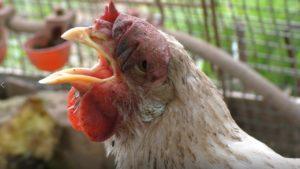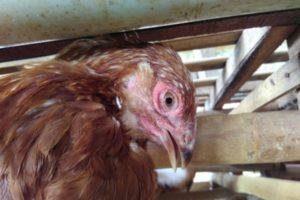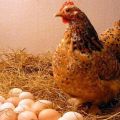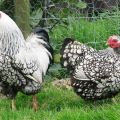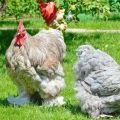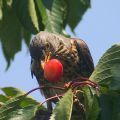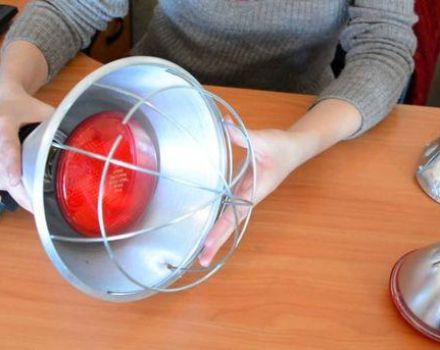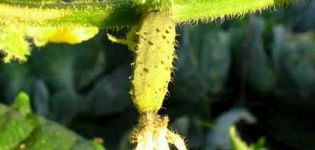Symptoms and treatment of bird flu in chickens, signs and manifestations
The symptoms of bird flu in chickens scare all owners of farms or private estates. The disease is extremely dangerous, it bears another name - "classic plague", due to the high mortality rate. Pathology is fraught with great losses, human infection is possible. To safely prevent it, you should read the information below.
Description of the disease
The first mentions of bird flu date back to 1878. The pathological process was discovered by a veterinarian from Italy by the name of Peronchitto. Due to the mass death of the livestock, it was originally called the "chicken plague". The disease belongs to subtype A, caused by viral microorganisms. Not only poultry, but also humans are affected. Chicken flu usually develops in winter, affecting one bird population, then the rest.
At risk are ducks, geese, chickens. The flu is of particular danger due to its constant mutability, does not give the protective properties of a person to fight it. Since the virus is virulent, transmission occurs by airborne droplets.
Stages of the disease
Once in chicken lungs, viral agents spread through the mucous membrane. After 4 hours, they enter the general bloodstream, destroy red blood cells, and lead to death. Viral microorganisms affect the nervous system, after which, the lungs swell, the intestines fail.
What are the stages of the pathological process of viral etiology:
- infection, further multiplication and accumulation of the virus in the body;
- the spread of viral agents to erythrocytes;
- the body's production of antibodies to resist viruses;
- the struggle of protective functions against pathology, destruction of blood cells;
- the body cannot cope with the virus, it dies.
From 10% to 100% of birds kept in the same territory die.
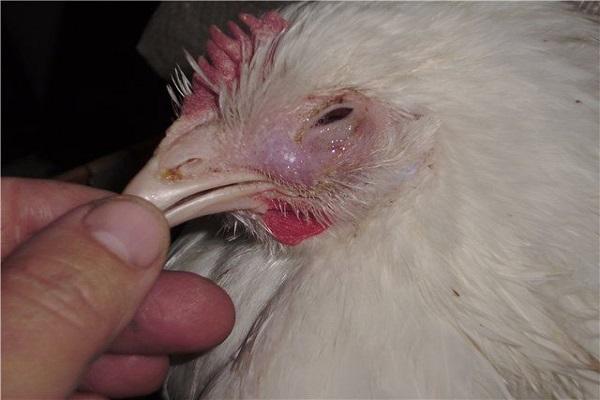
Chicken plague forms
There are several forms of viral disease. If we are talking about a severe phase, then for the first time 15 hours of infection, a clinical picture appears.
What are the forms of influenza disease:
- acute - the most dangerous for the life of birds, the symptoms are pronounced;
- subacute phase - less dangerous for birds, lasts about 1 month, is treatable;
- chronic form - the disease is difficult to identify, the clinical picture is poorly expressed, the infection develops due to a low pathogenic strain.
The incubation period lasts about 4-5 days.
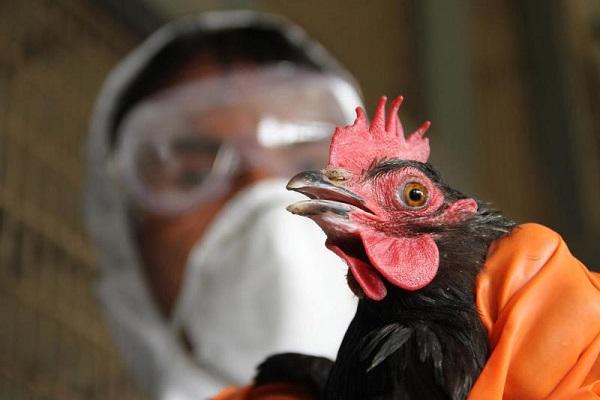
Is human infection possible?
A person can get sick with chicken distemper through airborne infection. This happens when cutting carcasses, assembling and packing eggs and meat. Viral agents also enter the body when cleaning excrement, touching contaminated objects.
Rarely, infection occurs after consuming meat, eggs from affected individuals. Influenza is mutational and often modifying in nature. Healthy people can get bird flu from a sick person.
Causes of occurrence in birds
Influenza disease is provoked by the Ortomyxoviridae virus belonging to group A. It has a complex structure, the microorganism is able to show resistance to medicinal drugs.
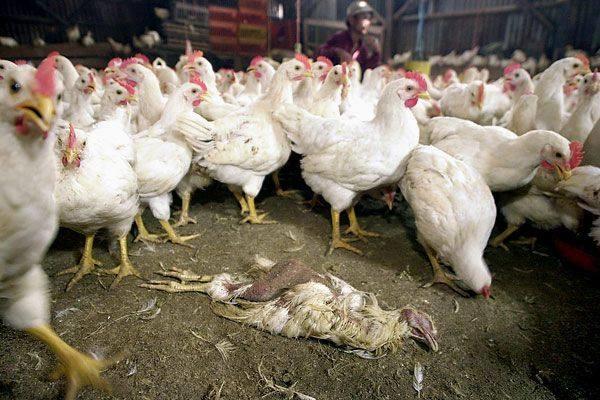
Scientists have studied several varieties of the virus, but they are more interested in the type H7N7, which causes bird plague, and the H5N1 virus, from which birds die in a day. Other types of viral agents can be asymptomatic or mild and are generally not dangerous.
In addition to animals, carriers of pathogens can be:
- duck eggs;
- chicken eggs;
- carcasses of an infected bird.
The deadly H5N1 virus is also dangerous because it is invisible and easily adapts to the environment. Methods for its destruction have not yet been developed. The main carriers of influenza are wild waterfowl and migratory birds. They do not have mass diseases, usually only a few individuals are sick. The pathology proceeds without symptoms, but they can infect domestic birds or humans. The second group of carriers of the virus includes exotic birds, for example, parrots. Chickens can get infected from them if the owner of the house keeps these pets.
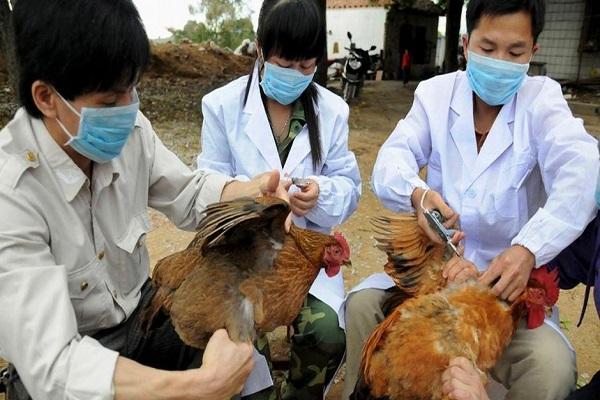
Clinical picture
The disease manifests itself with varying intensity, depending on the stage. The main symptoms of "chicken plague" include:
- a sharp decrease in egg production;
- exhaustion, complete refusal to eat, drink;
- feathers are very ruffled;
- birds wheeze, their breath is gusty;
- the temperature rises, it is capable of reaching 40-44 degrees;
- there is upset stool, brown droppings with a green tint;
- convulsive muscle contractions, neurotic behavior begin.
First of all, the nervous system is affected, the chickens cease to orient themselves in space. They stagger, unable to step on their feet, fall.
There is a deformation of the wings and neck, they acquire a non-standard position, there is no reaction to external stimuli. The birds suffer from thirst and die after pulmonary edema.
How to identify chicken flu: diagnosis
Pathology is diagnosed after opening the dead carcass. Before the death of birds, you can determine the infection by symptoms. In laboratory conditions, influenza is detected on the basis of isolating the strain from pathological material. An analysis of blood serum is done at different stages of the disease. These signs indicate the presence of "chicken plague".
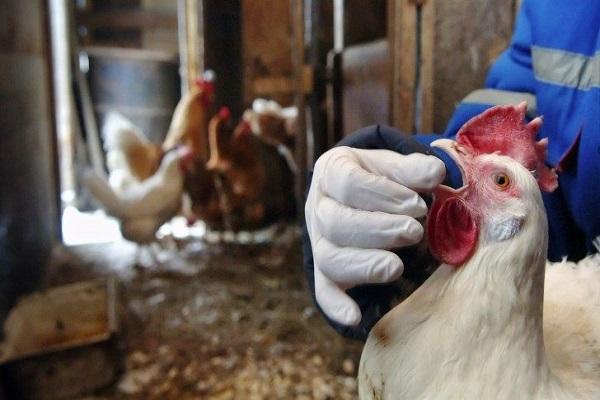
Is treatment possible?
It is useless to treat chickens from a viral disease; scientists have not come up with an optimal therapy. You can only take preventive measures on an ongoing basis. If bird flu has been detected in nearby regions, the bird should be completely isolated, kept in a closed place for 21 days in quarantine. If primary symptoms are found, the veterinary service is called.
How to deal with sick individuals
All birds affected by the influenza virus are killed to prevent further spread of pathogens. It is recommended to burn carcasses in designated areas. It is undesirable to consume the meat of diseased individuals.
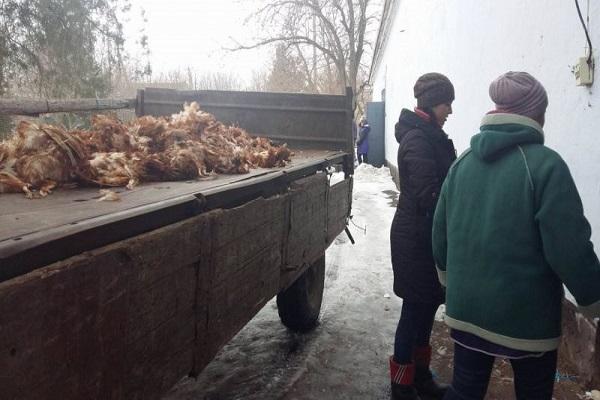
How to protect humans from bird flu
To prevent farmers from contracting bird flu, the following guidelines should be followed:
- prevent children from interacting with wild waterfowl;
- if there are sick birds in the flock, when interacting with the whole group, wear a respirator, mask and gloves;
- use removable shoes when working in a chicken coop, after, wash hands and face thoroughly with soap, spray clothes with disinfectants to which viral agents are sensitive;
- always keep meat and eggs in separate containers in the refrigerator.
If a person has the first symptoms of chicken flu, an urgent need to consult a doctor.
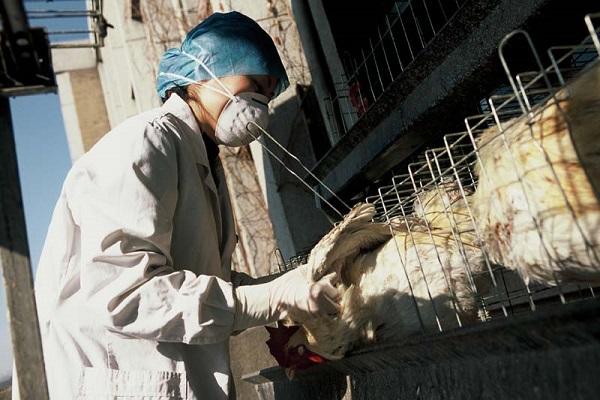
Forecast and prevention
According to experts, no preventive measures can guarantee 100% protection of birds from bird flu. If you act in a complex manner, you can create a reliable barrier that can overcome viral microorganisms. The main preventive measures are in the following aspects:
- keep chickens in the chicken coop so that they do not interact with wild birds;
- to restrict the access of domestic animals to water bodies, in case of focal outbreaks - from possible places of stay of wild birds;
- strictly control food, water quality consumed by domestic birds;
- regularly disinfect feeders, drinkers and poultry houses;
- organize a balanced diet for chicks from their first days of life, introduce vitamins into the menu;
- if an infection is suspected, spray the preparation "Terramycin" at a 20-centimeter distance from sick chickens;
- disinfect the birds with the "Chlortetracycline" agent, adding it to the forage mash at the rate of 0.3 g per 1 kg of bird weight.
If preventive measures are observed, it will be possible to protect chickens from bird flu by 90%.
